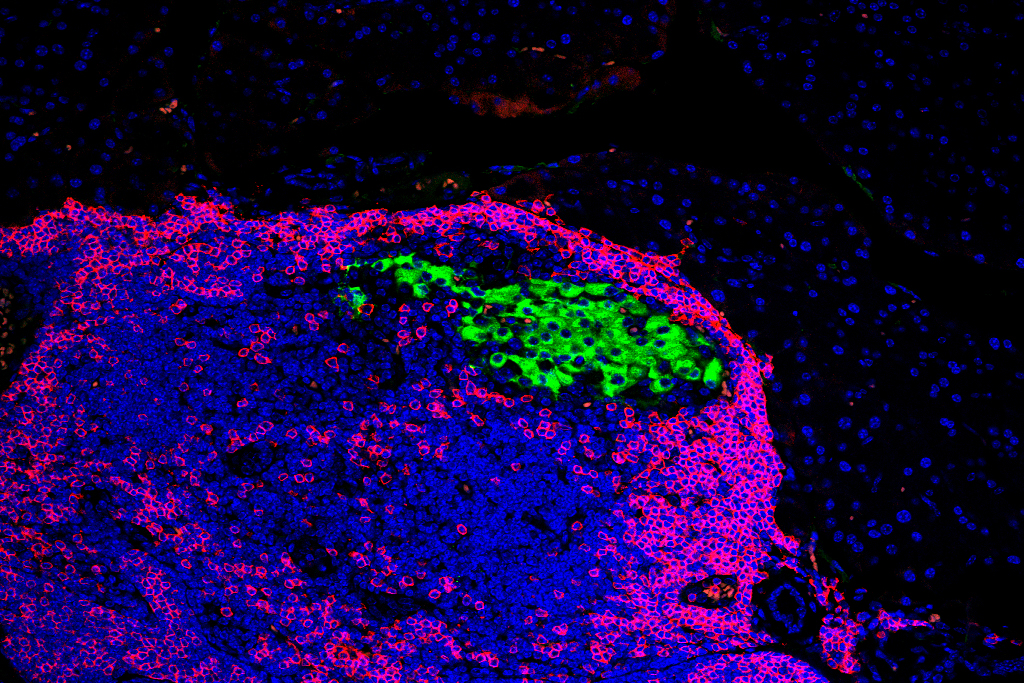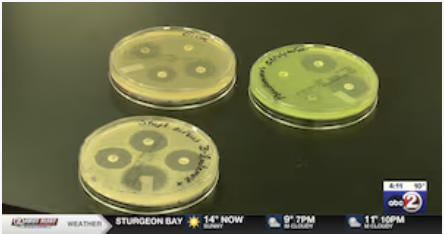Molecular Puzzles in 3D: Understanding a Mechanism for Methylation
A new publication from the Xuehua Zhong group at the Wisconsin Institute for Discovery and the genetics department at the University of Wisconsin–Madison clarifies an important epigenetic mechanism in plants that will help researchers better understand the epigenomes of both plants and animals.
Epigenetics, a relatively young and rapidly growing field of molecular biology, is the study of the modifications to organisms’ DNA that change gene expression. Without changing the DNA sequence, modifications like methylation — attaching H3C groups to DNA — can silence, or turn off, certain genes. Because epigenetic changes are more ephemeral than changes like mutations in DNA, they can be very responsive to external stimuli like stressors and other changes to an organism’s environment and may be a powerful way to manipulate gene expression.
In order to make future applications in fields like medicine and agriculture possible, epigenetics researchers need to understand the precise mechanisms by which epigenetic modifications are made. A study published in Science Advances this month details how methyltransferases operate differently in plants and animals to place methyl groups onto DNA and silence particular genes.
Domains rearranged methyltransferase 2, or DRM2, is a plant enzyme with close cousins in the animal kingdom that at first blush looks very similar to its mammalian peer. However the enzyme, whose mammalian counterparts have been studied extensively, behaves differently in important ways. In particular, DRM2 seems to go about “choosing” where to bind to DNA in an entirely distinctive way in plants.
To find out why this distinction arises between the mammalian and plant systems — and to learn more about both — Associate Professor of Genetics Xuehua Zhong and her lab partnered with structural biologists from the University of California, Riverside, Boston University, and Southern University of Science and Technology in Shenzhen, China. What they discovered was a three-dimensional shape-readout mechanism DRM2 uses to bind to DNA in plants, but which is not used in the mammalian system.
“We analyzed the plant enzyme in comparison to the mammalian enzyme and found that the mode of recognition between these two enzymes is completely different,” says Zhong lab graduate student and co-author on the paper, Sarah Leichter. In the mammalian system, the enzyme only binds to a particular sequence. But in plants, it’s not so much the precise sequence that’s important, but rather the resulting structure: the analysis revealed that plant DRM2 reads the shape of the DNA molecule that results from the underlying sequence. Since several varying sequences can produce similar structures, there are lots of sequence options that might produce binding sites.
“This DNA shape-dependent substrate recognition represents a novel example of DNA shape in regulating DNA methylation,” says Zhong. “This finding is exciting because it provides a tool kit for engineering specific mutations to modulate context-dependent DNA methylation”
“This is something that’s been unknown or uncharacterized and different in these types of enzymes,” adds Leichter. “It gives us some insight into kind of how the epigenetic landscape within plants is formed and why it is different from mammals.”





